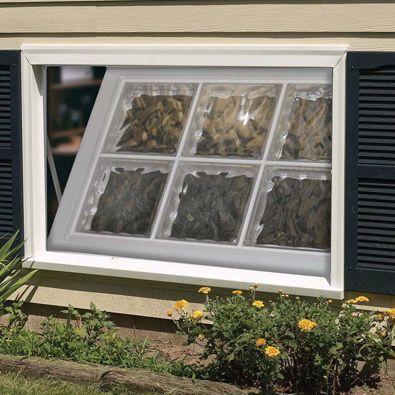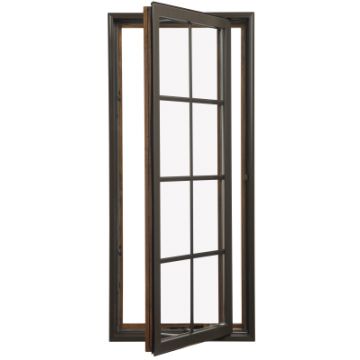Each window type for home has specific features and characteristics. In addition to appearance (from inside and outside), consider their function, whether or not you want to open them and the amount of light they let in. Also think about how you’ll clean and maintain them.

Double-Hung Windows
Double-hung windows offer a classic look. They have operable upper and lower sashes. Lowering the top sash and raising the lower sash can allow warmer air near the ceiling to move out through the top, while cooler air can flow in through the bottom. Many double-hung windows have sashes that tilt inward, allowing you to clean the exterior surfaces from inside your home. This feature is particularly valuable if the windows are on a second story.
Single-Hung Windows
Single-hung windows look similar to double-hung models, but only the lower sash is operable. As with double-hung windows, some models allow you to pivot the sash inward to clean the exterior.

Sliding Windows
Sliding windows have one or more panels that move horizontally along upper and lower tracks, allowing you to easily open up half of the window for ventilation.
Accent Windows
Accent windows are available in a standard rectangular design or shapes that offer more visual variety, such as an octagon. These windows are usually fixed and don’t allow ventilation.
Glass Block Windows
Glass block windows are constructed from individual blocks sealed together with mortar. The thick, break-resistant glass provides privacy but still allows light into your home. Glass block windows are fixed, but some have a built-in vent you can tilt open. Other models — designed for use in a laundry room — include an outlet for a dryer vent hose.

Basement Hopper Windows
Basement hopper windows are hinged on the bottom and open from the top. They can provide airflow for a basement and are typically placed low on an exterior wall.

Other Types of Windows
Projection windows extend out from the house. A bow window is an assembly of three or more individual units positioned at slight angles — 10 degrees, for example — giving the appearance of a gentle outward arc. Bay windows are similar but fit together at greater angles — 30 or 45 degrees, for example — and project further from the house.
Picture windows are fixed models designed to offer wide, unobstructed views and provide lots of light.
Casement windows are hinged on one end and pivot out for ventilation at the other end. They’re easy to open and provide good air flow.

Awning windows have a top-hinged sash that tilts out from the bottom. The design of an awning window helps keep rain out when the window is open.

Skylights mount in the ceiling and may be fixed or operable. During the day, they function like overhead light fixtures.
Windows and Energy Efficiency
Some windows feature two layers of glass (double-pane) or three layers (triple-plane). Air or argon gas, which has better insulating properties, is sealed between the panes as an insulator. If the unit is properly constructed, condensation shouldn’t occur between the panes, but a drying agent, called a desiccant, may be used between the panes as added protection from condensation.
Low-emissivity (Low-E) glass has a coating that allows light in but blocks much of the heat that contacts it. A Low-E coating can help keep your home cool on a hot day by reducing the exterior heat entering your home. On a cold day, it can keep most of the interior heat from escaping through the glass. Low-E glass also reduces the amount of ultraviolet (UV) light entering the home, helping protect carpets, upholstery and furniture from fading.
The U-value or U-factor of the window indicates the rate at which heat flows through the window and frame and measures overall energy efficiency. A lower U-value means the window will insulate better.
Windows may be labeled as ENERGY STAR® certified for specific zones of the country.
